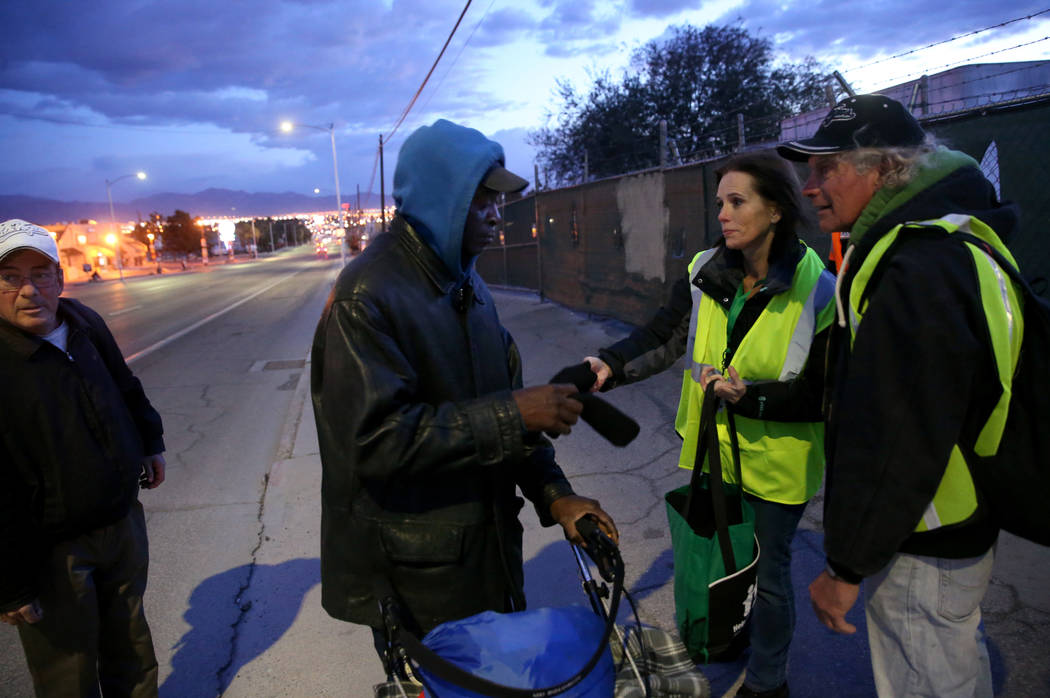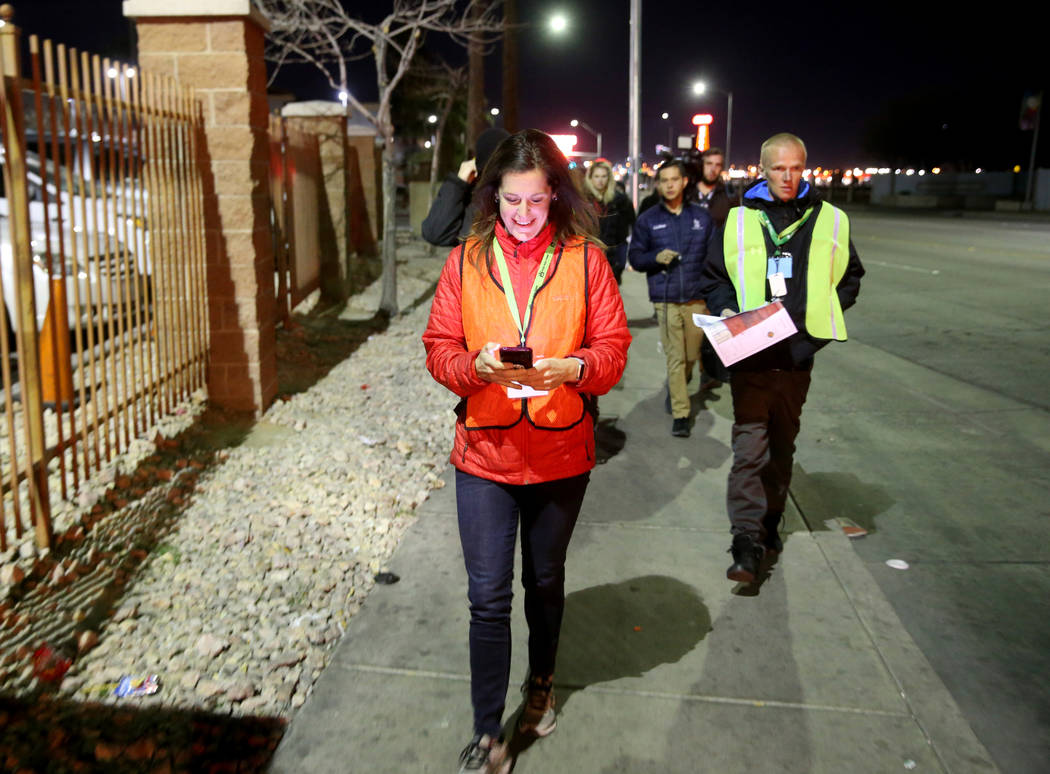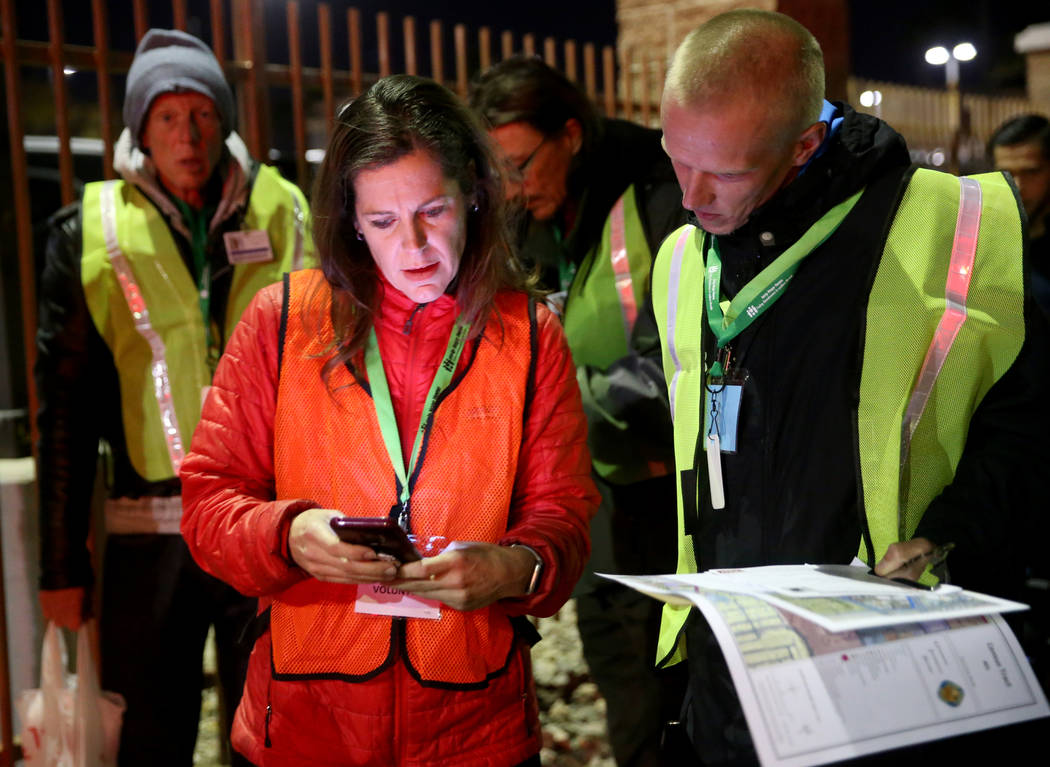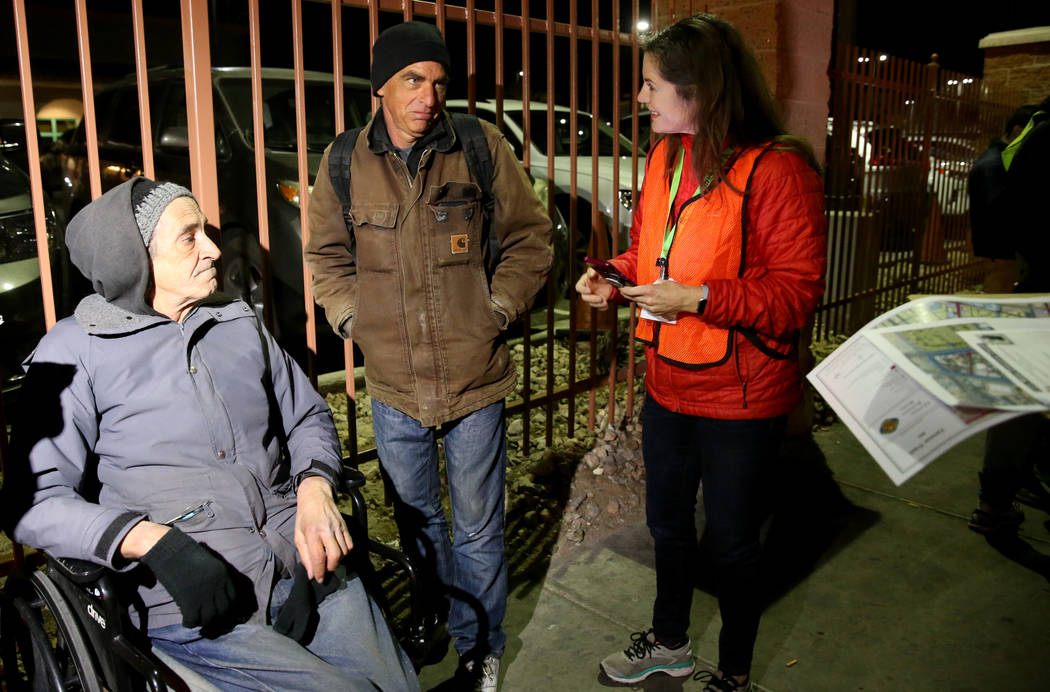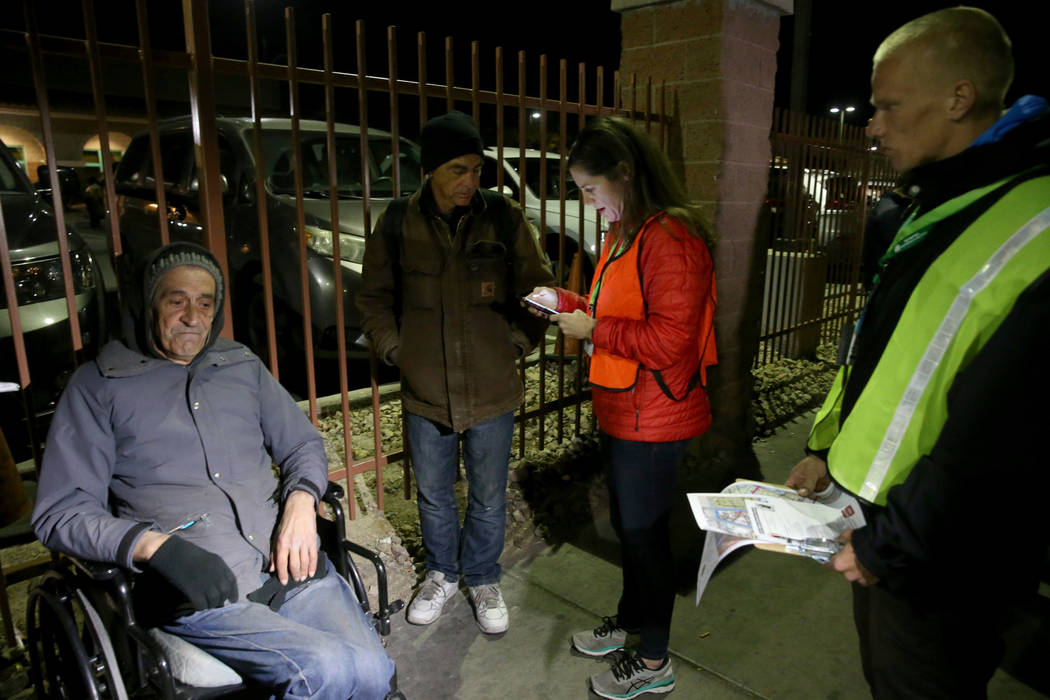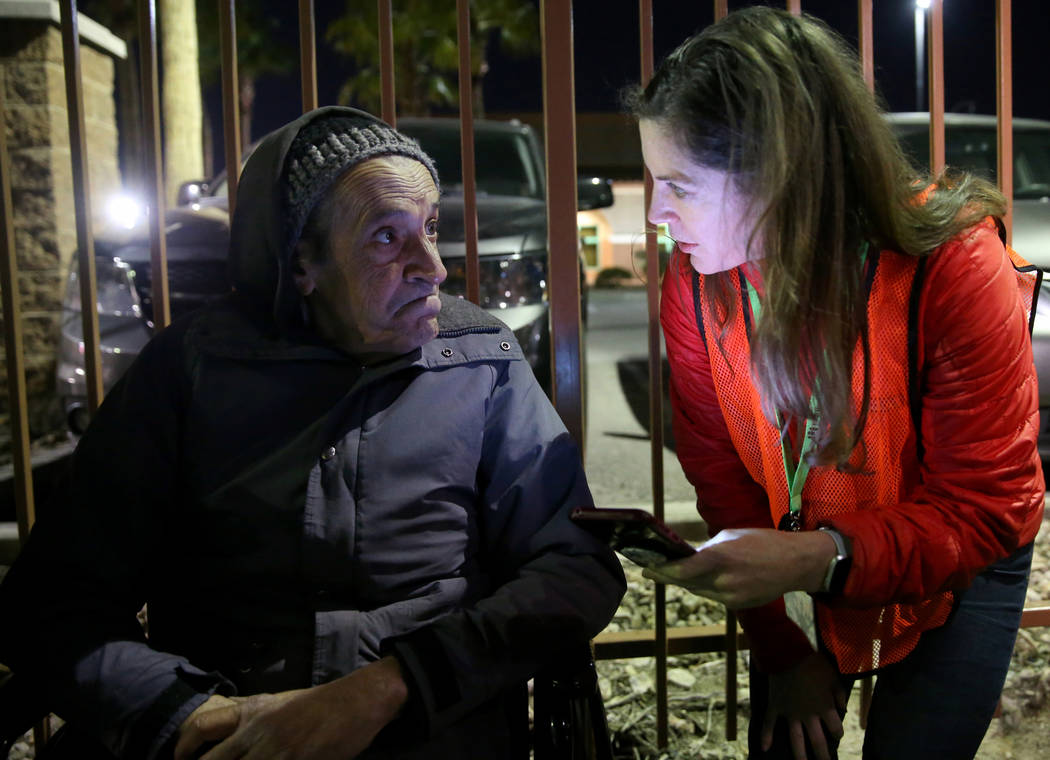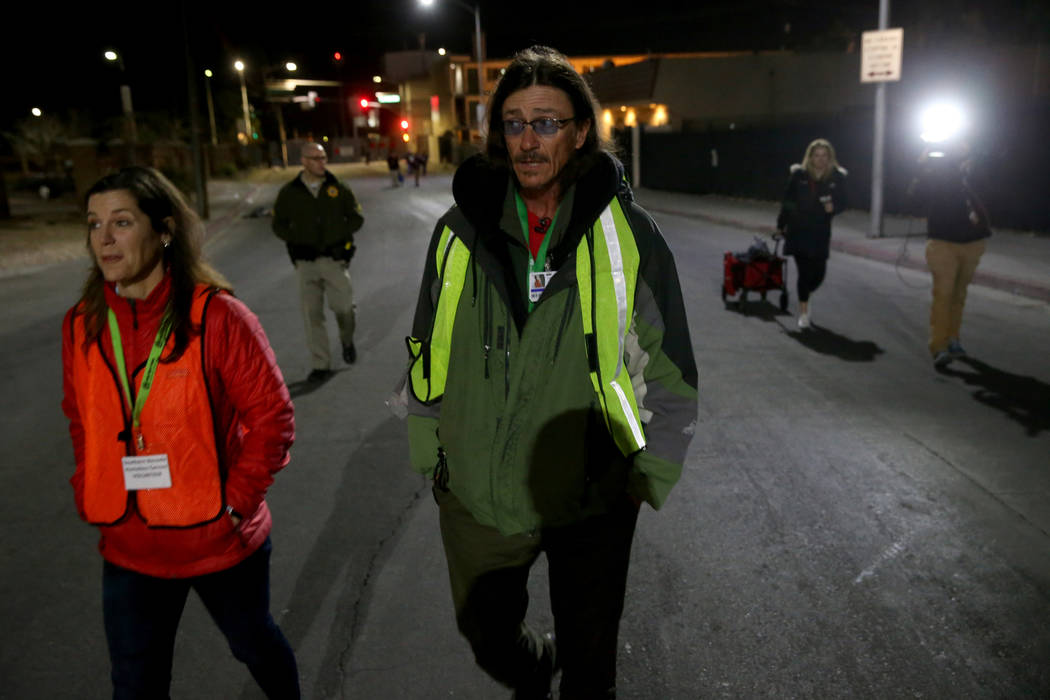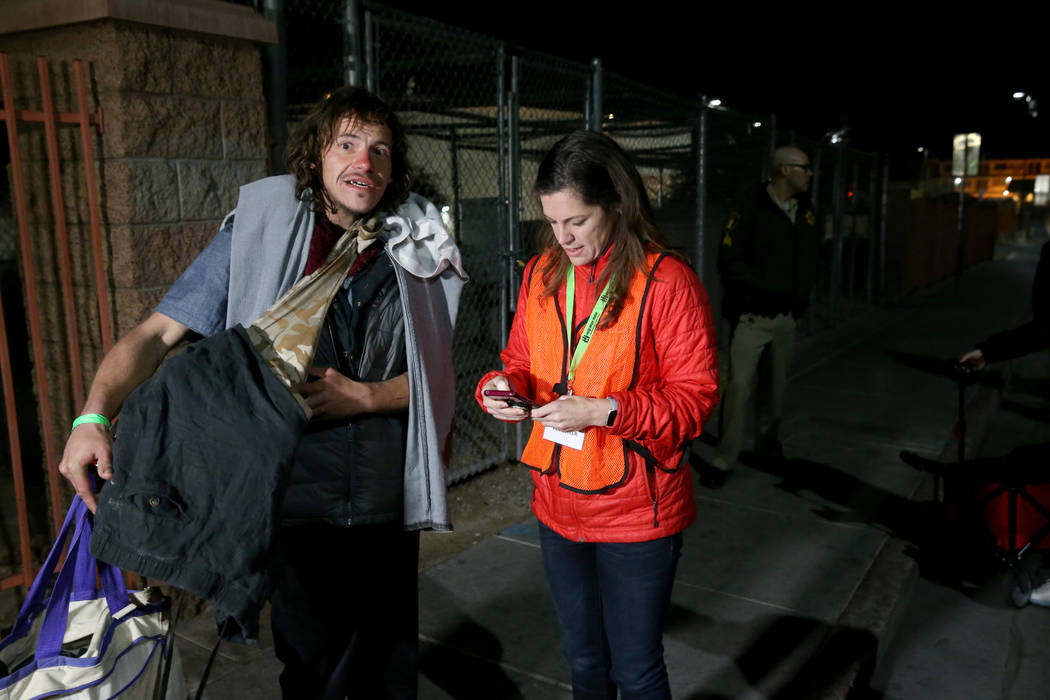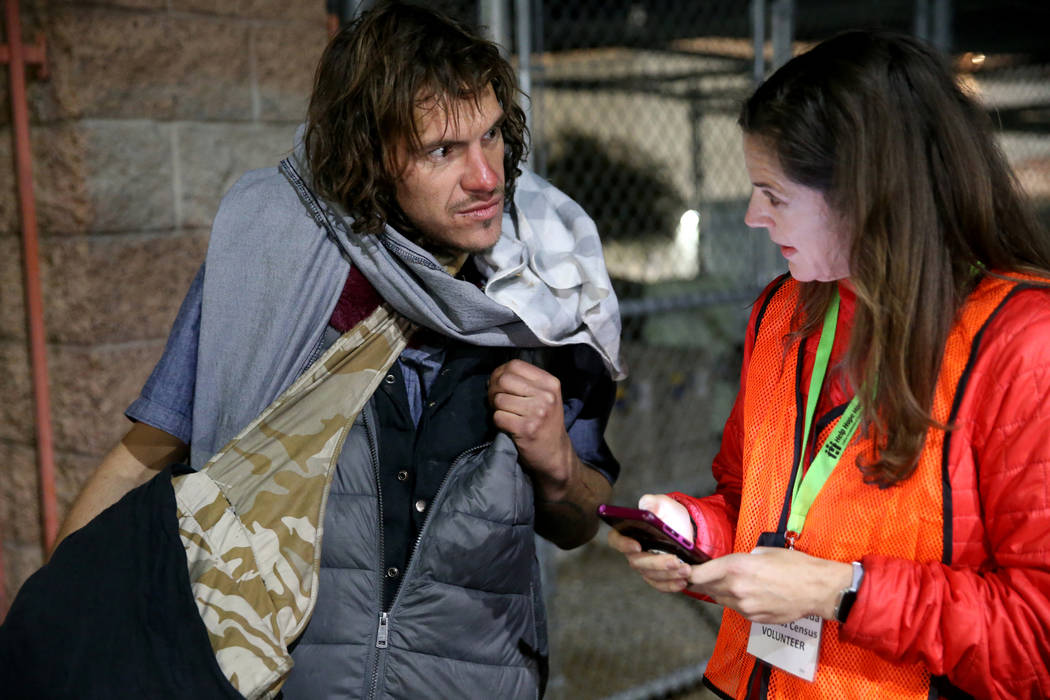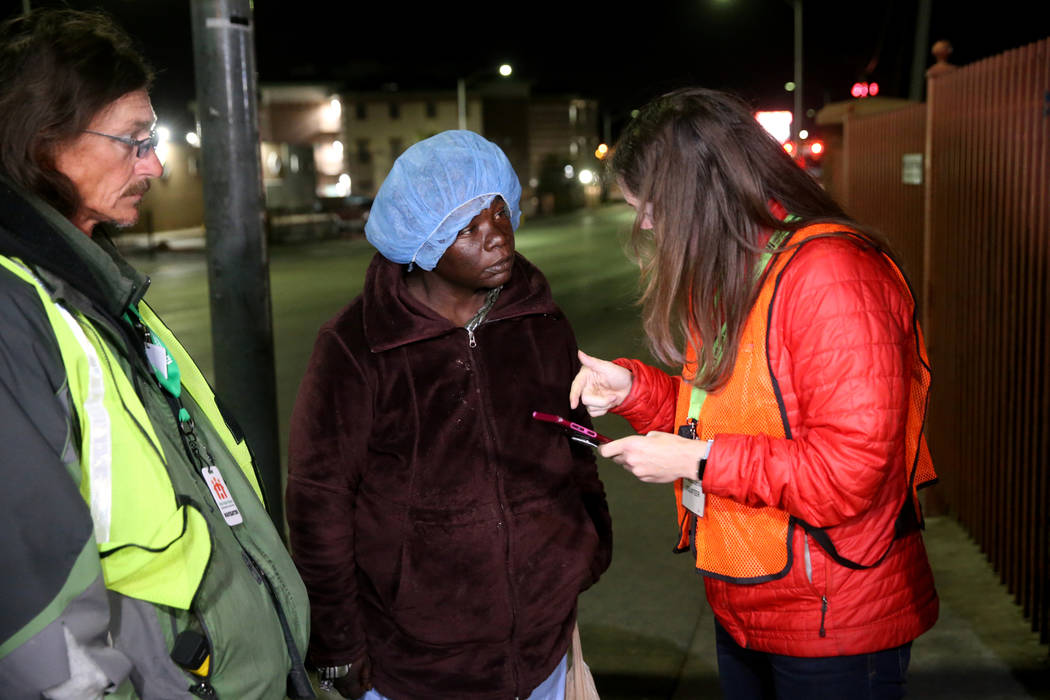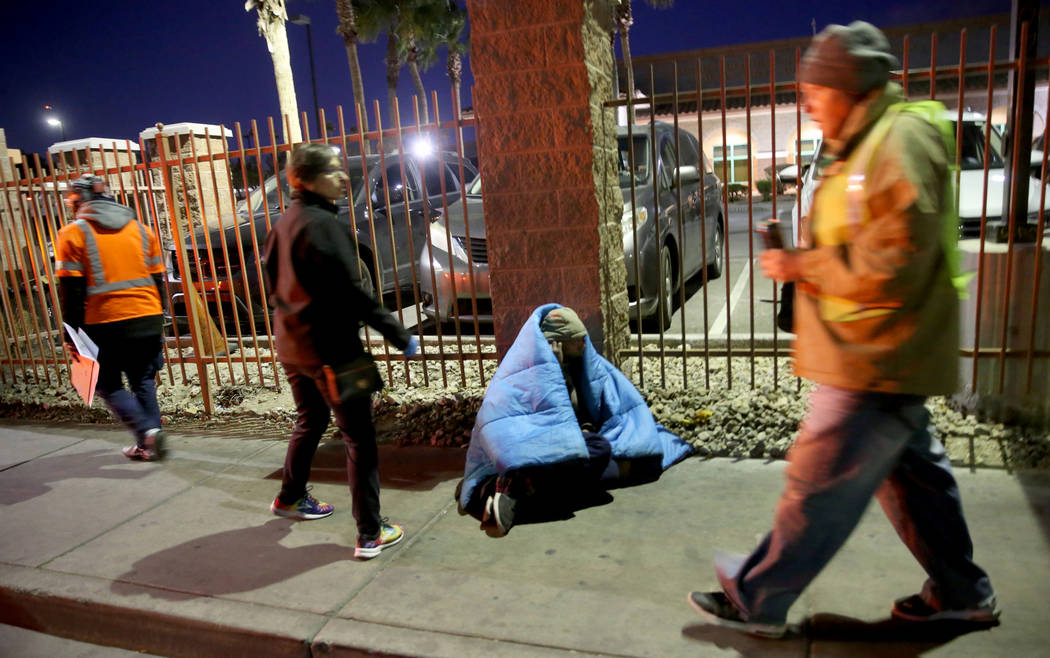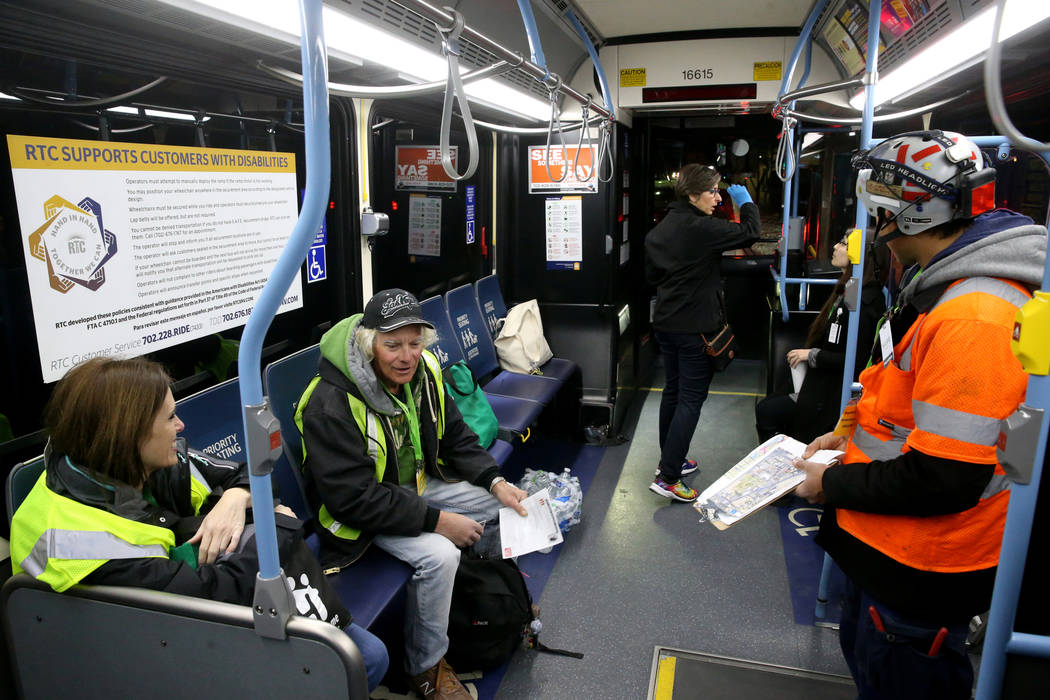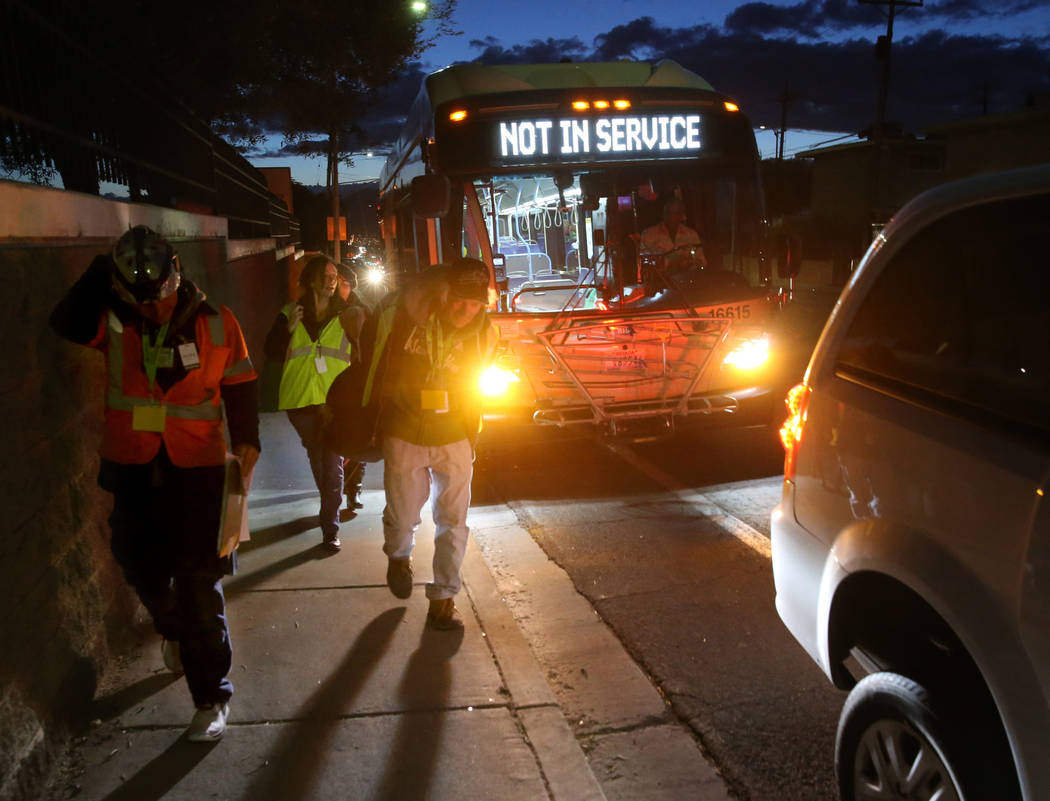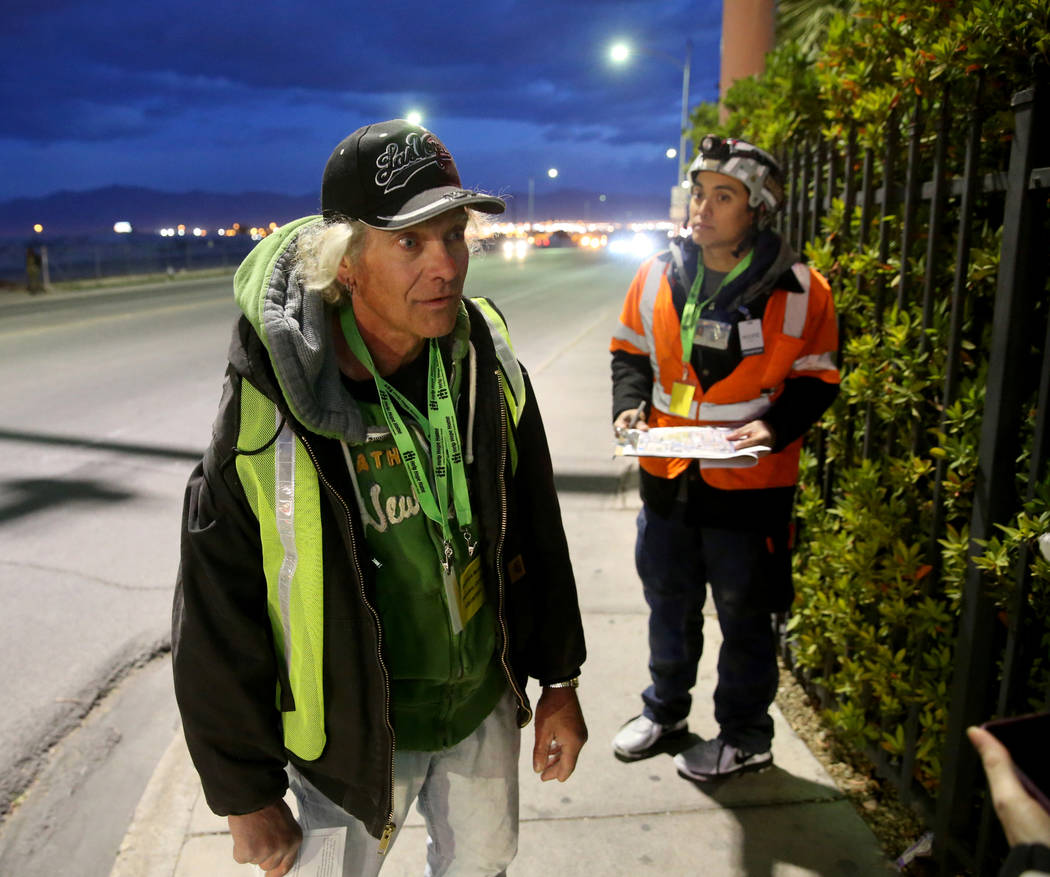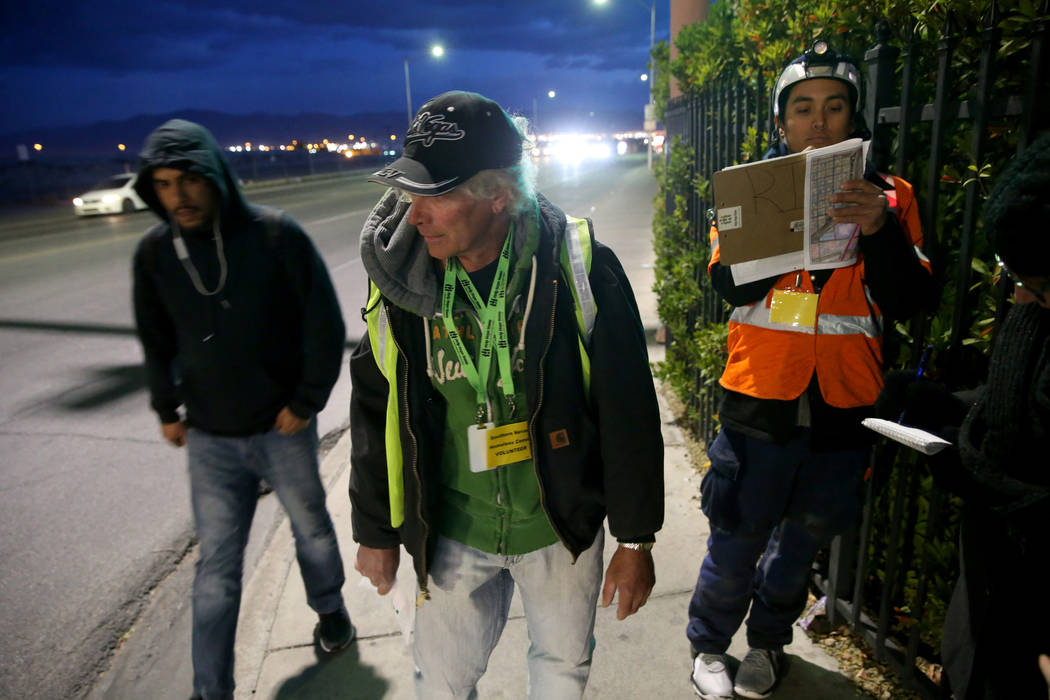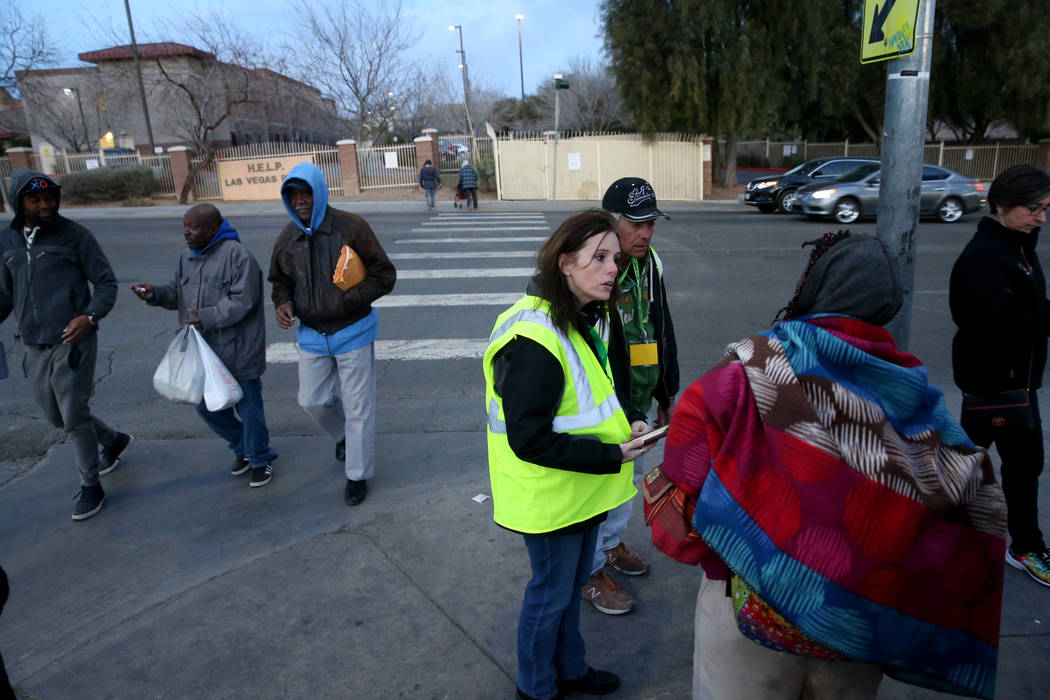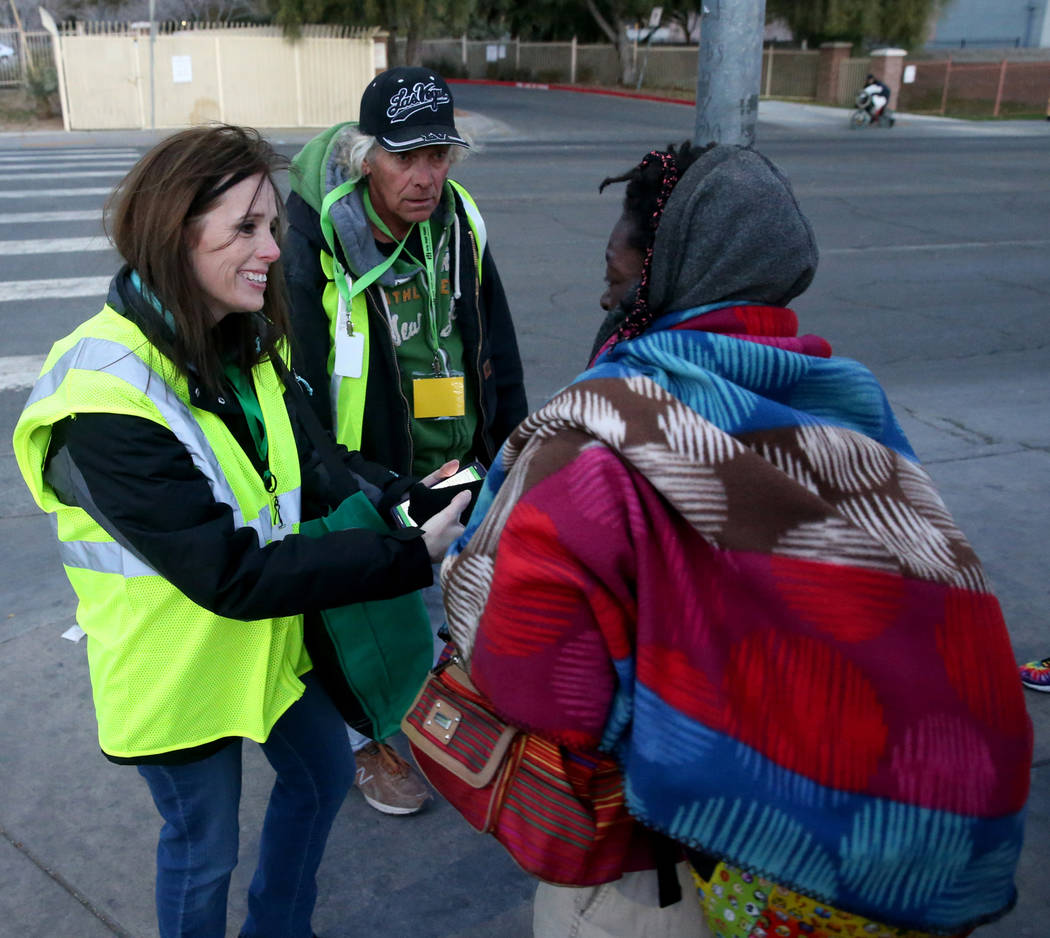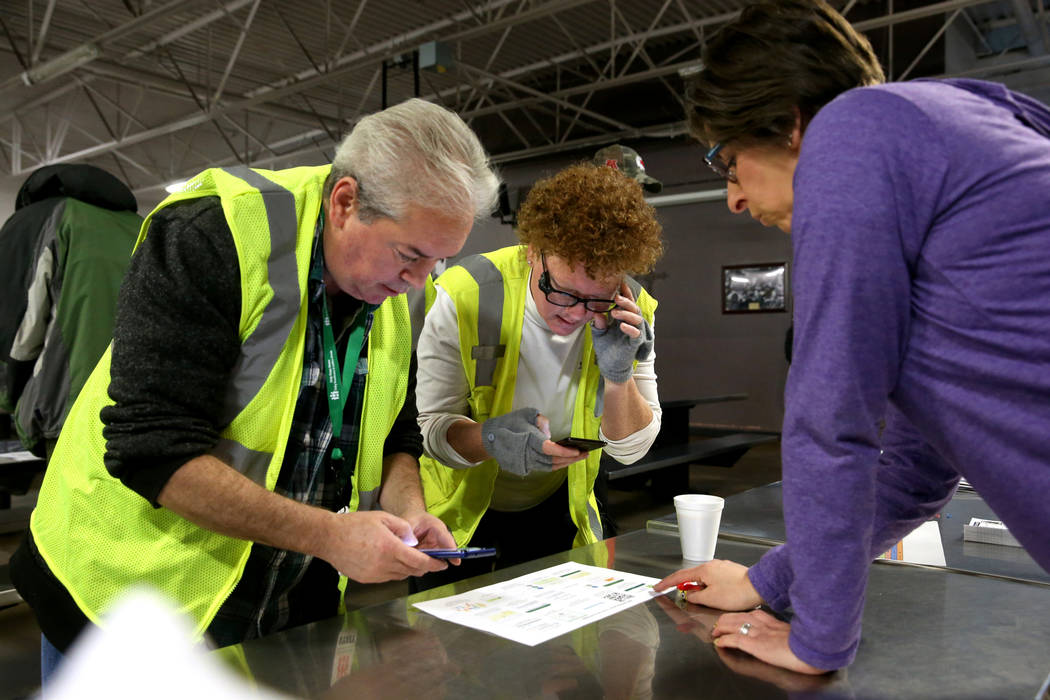New technology deployed in annual Las Vegas Valley homeless census
The first group of volunteers didn’t have to go far early Wednesday to begin counting the homeless on the streets of Las Vegas.
Volunteer Liz Ortenburger, CEO of the domestic violence shelter SafeNest and part of the first group to head out just before 5 a.m. to begin the annual homeless count, pulled out her cellphone and approached a man in a wheelchair at the bus stop on Las Vegas Boulevard North.
She clicked on the opening screen and pinned her location. Then she opened up a survey and asked the man if she could ask him a few questions.
Nick Scioli, 64, agreed.
The mobile app, Survey123 for ArcGIS, is part of a new approach officials overseeing the annual Southern Nevada Homeless Census are testing this year.
Previously volunteers fanned out two weeks after the initial count to ask homeless people to take the survey, which provides demographic data as well as information on the causes of homelessness. This year, the 568 volunteers conducting the count were able to complete the survey immediately, assuming the person being counted agreed.
The new method was being beta tested in a year where the federal government only requires shelter counts, but Clark County officials believe it will paint a more accurate picture of homelessness in the region.
They also say it will speed up the reporting of the final numbers in the tally, which are expected sometime in spring rather than in midsummer as in previous years.
Critical in determining federal aid
The homeless census, mandated by the U.S. Department of Housing and Urban Development, is crucial for the county to receive federal aid directed toward homeless programs. This year, Nevada received more than $16 million in federal grants for 50 existing programs, with Clark County receiving more than $13 million. Last year’s census counted 5,530 people on the streets and in shelters.
The sheltered homeless were counted Tuesday night, and the unsheltered homeless youth and adults were counted Wednesday morning instead of at night. Those in rural areas will be counted on Thursday.
“We’re hoping to get a much higher sampling doing it this way, which will give us more robust data,” said Michele Fuller-Hallauer, social services manager.
Scioli quickly answered the questions, saying he’s 64, identifies as a white/Caucasian, never served in the armed forces and has a physical disability.
It’s his first time experiencing homelessness, he said. He became homeless two years ago when cancer killed his wife. They were each on a fixed income and he couldn’t pay the bills with his $900 monthly Social Security check.
“I’m waiting for affordable housing. I have nine more months,” he said. “Everyone here is doing the best they can with what they have. This is just another chapter in the book of life.”
Ortenburger handed him a pair of warm black socks, one of 4,000 that volunteers were handing out to people who completed the questionnaire. Usually, there is a 10 to 20 percent response rate, and the county’s goal for this year is to reach at least 60 percent.
“If you can’t talk to this person, then just write an observation,” Brenda Herbstman, the grants coordinator for the county, told a group of yellow-vested volunteers. “There’s nothing wrong with just counting a body, or a tent, or someone in a car.”
Limiting duplication
Nearby, a Las Vegas police officer walked along to ensure the volunteers’ safety. County buses helped distribute the volunteers around the area, another new feature of this year’s count.
Volunteers also were deployed from 14 sites, rather than the previous six to broaden coverage.
Some survey questions are also pegged at preventing duplication.
“We anticipate a small number of duplications, but we also anticipate potential people that will be missed,” Fuller-Hallauer said. “The hope is that it kind of balances each other. We feel the methodology is statistically sound and we’ve done anything we can to mitigate any potential skewing of the data.”
The volunteers scanned 94 percent of 487 census tracts, Fuller-Hallauer said, adding that the county looks at three years of first responder and outreach data to determine if homeless people are still present in the tracts.
“People are always moving about every year; we want to make sure we canvass where the people are,” she said.
About an hour after the first group departed, more volunteers traveled north on Main Street back to Catholic Charities.
One homeless man, Derwin Harris, 60, walked uphill, leaning into the wind with the aid of his walker. He answered some questions and grabbed a pair of black socks.
“I love me some wonderful black socks,” he said with a smile before slowly making his way to “The Field” on G street, where he knew there would be volunteers ready to serve a hot and hearty breakfast.
Contact Briana Erickson at berickson@reviewjournal.com or 702-387-5244. Follow @ByBrianaE on Twitter.



